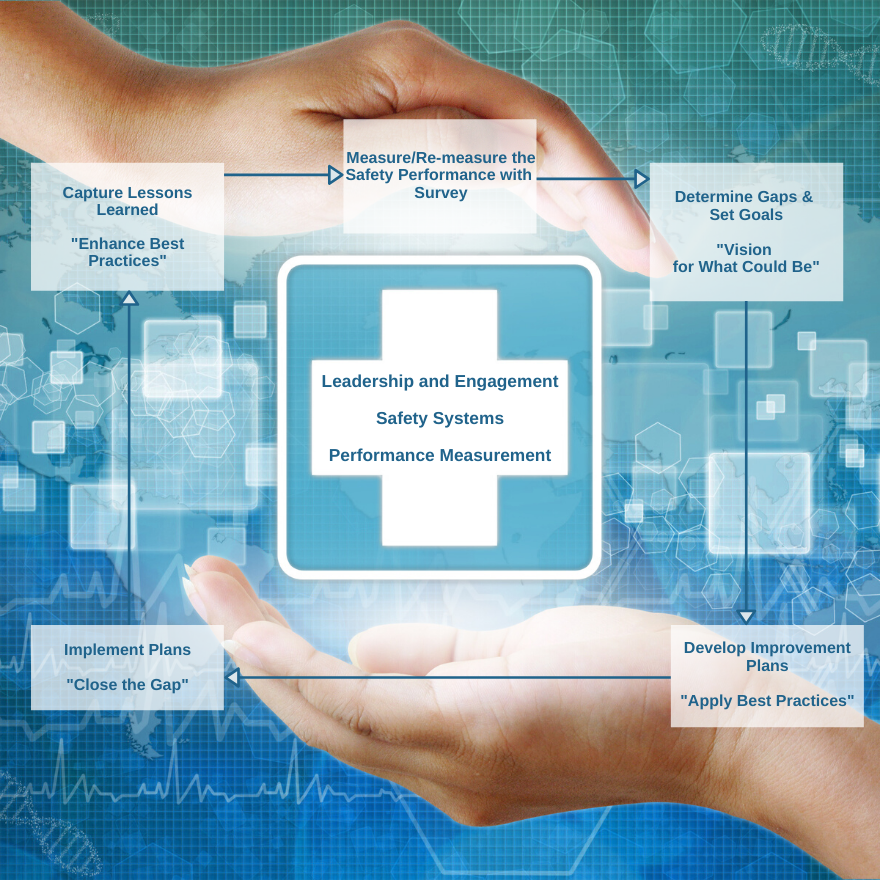So why benchmark? This normally is driven by the desire for change. Change can be driven by competition, cost and by people. In an increasingly globalized, challenging marketplace the drivers for change are probably all three.
In this article, I’ll take a look at what benchmarking is, what the challenges of benchmarking are, what you want to achieve from benchmarking and some top tips to improve your own benchmarking.
What is benchmarking?
The European Agency for Safety and Health at Work (EU-OSHA) has identified benchmarking as:
A planned process by which an organisation compares its health and safety processes and performance with others to learn how to reduce accidents and ill health, improve compliance with health and safety law and/or cut compliance costs.
Benchmarking poses organisations with the challenge of:
-
- What is it we want to achieve?
- What or who do we benchmark against?
- What is the cost of benchmarking?
- How will benchmarking improve compliance/performance and reduce costs?
When benchmarking is discussed, the first step will lead to what data can be easily collected and can it be benchmarked against industry or government legislation or statistics. The aim is to show how you are performing.
In most cases benchmarking ends up a measurement of Accident Statistics against an identified standard.
The above is great if you have a high accident or incident rate. But what if you want to use benchmarking to improve staff engagement and involvement in safety to improve your safety performance? Or compliance with legislation?
Reporting accidents and incidents can also be seen as a sensitive issue. Organisations are reluctant to share information on this. Research of Corporate Social Responsibility reporting does reinforce this view. So, let’s be honest it’s unlikely that a similar organisation will share their benchmarking data with you.
Organisations at this point are now faced with a quandary:
What does good or best health and safety practice really look like? And, who can we talk too?
Networking is Vital for Benchmarking
The OSHA research identifies networking as instrumental in creating relationships of trust and collaboration to enable benchmarking schemes to be successful. Experience has shown that networking takes place internally and externally.
Externally, professional bodies such as the IOSH and IIRSM encourage this and you don’t have to be a Safety Professional to attend the meetings. Likewise, events such as the Safety & Health Expo provide similar opportunities.
Internal networking is often a rich source of ideas and benchmarking opportunities, particularly where the direction of travel for safety and health is towards health and wellbeing programmes. Here the organisational focus is people-driven (values and organisational culture) rather than on compliance.
From an organisational view, this creates a further challenge when considering benchmarking. Any process reliant on measuring accident statistics will be seen as having limited engagement value and is must be a key consideration when engaging leaders and key stakeholders.
Health and safety performance improvement must be led. This is a principal of law and good management.
Language, internal communication programmes and expectation setting are key to the success of any benchmarking program and should form part of your planning.
This brings us back to the question:
What is it we want to achieve?
Achieving Best Practice
In this context, terms such as ‘good practice’ or ‘best practice’ should be considered carefully. The OSHA report found that a message of ‘good practice’ rather than ‘best practice’ was often more beneficial. It’s seen as offering guidance rather than being prescriptive thus aiding engagement.
Where benchmarking is being used to drive improvement it’s important to identify this and make any targets realistic and create competition.
There are several industry benchmarking schemes already in place. Schemes such as ISO 45001 set a framework around a good practice approach.
The struggle in complex organisations is how can we report on our Health and Safety Performance in such a way as we can demonstrate improvement and show how we engage our leaders and staff in our programs. Often the challenged faced is to do it on one page.
At Cardinus, we recognise that this is a key topic for our clients who look for solutions to benchmark within their own organisation.
There is no doubt that benchmarking provides the opportunity for organisations to refocus their approach to health and safety and improve.
Top Tips for Setting Up Your Own Benchmarking Scheme
1. Topic area and vision
Have a vision of what you are trying to achieve. Try not to do too much and keep the topic area simple.
2. Make a plan – Plan, Do, Check, Act!
Make and Document Your “Plan”
Identify who you need to lead and participate in the program, who are your key stakeholders and influencers? What’s the cost and benefits and are there other considerations for benchmarking?
3. Leaders
You need support from senior management and a ‘neutral broker’ or someone who is trusted by all participants to lead the program. The program needs to be led by the leadership team from the heart – A simple ‘We Care Message’ resonates well when we are dealing with people.
4. Who/What to benchmark
When planning your program, make sure that who/what you benchmark represents the organisation or offer the right opportunity for improvement.
5. Feedback
Decide how this will be done, the information that will be supplied and who will receive it. Once data has been disseminated, what are the rules regarding how it is used? Remember, keeping that trust going is vital.
6. Support those who struggle – adopt a servant/leadership approach
Experience has shown organisations punish underperformance. Benchmarking should be used to help improve underperforming parts of the organisation by being able to share expertise and learning. Thereby encouraging improvement and building trust. This is a Win/Win situation!
7. Celebrating Success.
Success breeds success. But this type of program is about teamwork, so it’s important to publicly thank those who have helped in any achievement.
In the words of Henry Ford:
Coming together is a beginning; keeping together is progress; working together is success
Happy Benchmarking! For more information on our range of consultancy services click here.



